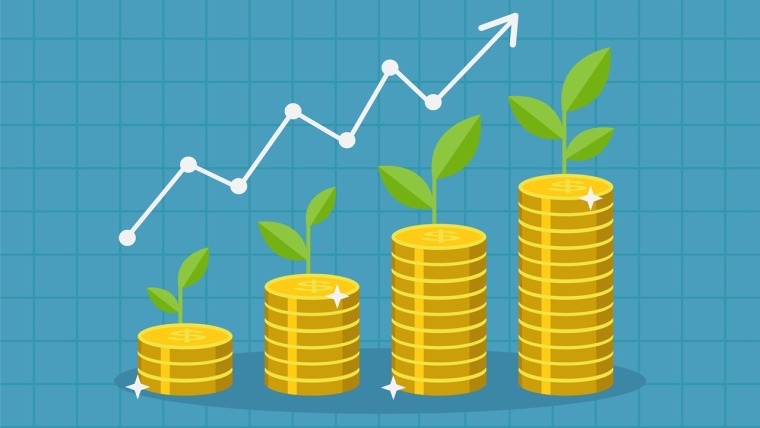
New Zealand's still set to see "a growth upswing" running into summer and in 2026, supported by the combination of lower interest rates and high commodity prices, according to HSBC economists.
In an Economic Comment following the shock 0.9% decline in June quarter GDP, HSBC's Australia and New Zealand chief economist Paul Bloxham and economist Jamie Culling said while the latest GDP figures have led them to sharply downgrade their 2025 GDP forecast to 0.4% (previously 1.7%), "we expect GDP to recover in [the second half of] 2025 and 2026".
"Two key factors are likely to continue to underpin the upswing. One is strong commodity prices, which have seen the terms of trade around a record high and is supporting national incomes.
"The other is lower interest rates, which are expected to support the consumer and business investment. The RBNZ has already delivered 250bp of easing in its cash rate [OCR] so far. Our central case sees another 75bp of easing - a 50bp cut in October, and a 25bp cut in November - taking the RBNZ's cash rate to 2.25%."
In discussing second quarter fall in GDP, the economists said global trade developments and heightened uncertainty may have contributed to firm's delaying investment decisions.
Temporary local factors, such as energy restrictions on Tiwai Point aluminium smelter and volatility in the timing of food manufacturing, also weighed on output in the quarter. Net migration has slowed sharply as more Kiwis have departed to Australia too.
"Monetary policy also seems to be transmitting slower than typically previously assumed. Credit growth has accelerated but lower interest rates are yet to support growth or the housing market more broadly," the economists said.
"A delayed rollover of households onto lower fixed mortgage rates, a still-soggy jobs market, and lingering cost and price pressures may be factors here."
Bloxham and Culling said "a key part of the story" is the great depth of the decline that the NZ economy has needed to get itself out of.
"Recall, New Zealand had the largest downturn across the developed economies in 2024. This included a significant housing price correction with price levels still 16% below the November 2021 peak."
They said the second quarter GDP fall 2 would suggest that the 'tough times' New Zealand was facing in 2024 have continued, with the recovery that was seen in the last quarter of 2024 and first quarter of this year "seemingly completely unwound".
"However, this reading may be a little too downbeat. Some of the weakness in the Q2 GDP figures can be put down to statistical issues.
"Statistics New Zealand has had difficulty measuring the economy in recent times. Recall the very large revisions made to GDP in December 2024, where two recessions became just one large one that began in Q2 2024.
"Three quarters on, last week's figures also had big statistical quirks. The numbers showed that the top-down GDP estimate does not match the bottom-up sum, and the gap - a 'balancing item' - has been notably volatile and seasonal. It made a very large negative contribution to Q2 GDP, of around -0.6ppts."
In terms of what comes next, the economists note that the RBNZ had already flagged it saw 50 basis-points of easing in its own OCR projection.
"...And we think the sharp downside surprise on Q2 GDP means more spare capacity in the economy than the central bank had expected, and will be enough to get the committee to deliver an outsized [50 bps] October cut.
"The November [RBNZ OCR] meeting outcome will hinge more on the forthcoming Q3 jobs and inflation data, but we expect a pathway of 'least regrets' to justify a cut, particularly given the unusually large gap in meetings over the summer months."
The economists say, however, the Government also has a part to play with its fiscal policy.
"Fiscal policymakers have been looking to consolidate after the large pandemic-era spending, and this makes some sense," the economists said.
"However, the primary goal ought to be aiming for New Zealand to be 'open for business' and to be attractive for local and global investment. If fiscal policymakers can help create an environment where the private sector can thrive, this would help to underpin a strong growth pathway."
Former National Party Finance Minister Ruth Richardson had in fact last week said "a course correction" is urgently needed by this Government and she said the best way to do it is "a Spring Statement to correct the fiscal path, get spending under control and give the private sector room to grow again". Interest.co.nz's Dan Brunskill had this to say about that idea.
4 Comments
In discussing second quarter fall in GDP, the economists said global trade developments and heightened uncertainty may have contributed to firm's delaying investment decisions.
No, it's because no one is buying their stuff.
No, it's because no one is buying their stuff.
Yes. The 'real economy' in Aotearoa is the issue. It's actually similar in the U.S. The top 10% of income earners accounted for 49.2% of all U.S. consumer spending in Q2 2025, up from 48.5% in the previous quarter - a new high since tracking began in 1989.
Without the rich pr**ks, you're talking about a depression.
https://www.marketplace.org/story/2025/09/17/top-10-of-earners-make-up-…
I doubt that the Rich Ps are buying more, it's a case of the lower classes being royally screwed by Trump with unemployment and inflation now rising. The Rich Ps simply are taking a bigger slice of a smaller cake
"The economists say, however, the Government also has a part to play with its fiscal policy."
They certainly took their time and a lot of damage has been done in the meantime. Unemployment is still rising and households are still highly indebted.

We welcome your comments below. If you are not already registered, please register to comment
Remember we welcome robust, respectful and insightful debate. We don't welcome abusive or defamatory comments and will de-register those repeatedly making such comments. Our current comment policy is here.